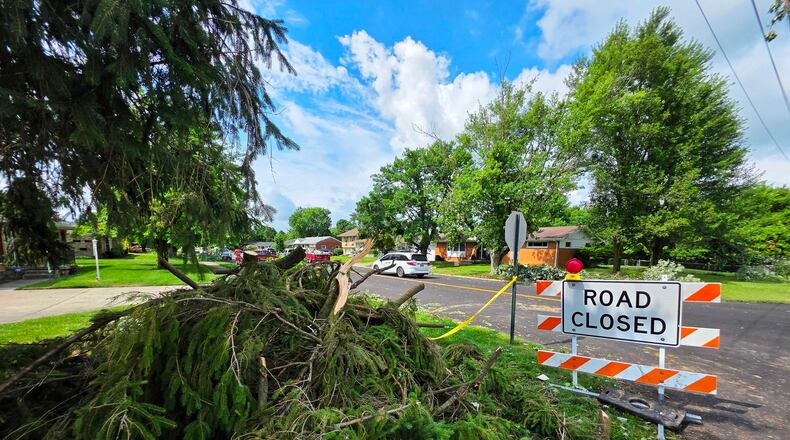“It’s not just the EMA; it really is the support of the commissioners and the support of the sheriff’s [office] and then obviously the community, too,” Clements-Pitstick said.
At a future Board of Clark County Commissioners meeting, NWS will have a presentation on the program and give the county a street sign officially designating the county as StormReady.
Being StormReady
Being StormReady “is about building community resilience in the face of increasing vulnerability to extreme weather and water events,” according to NWS.
The program aims to assist in reducing fatalities and injuries, as well as minimizing property damage, providing clear and detailed recommendations, helping people make the best decisions in a weather event and establishing a relationship with StormReady contacts and weather service providers.
Being StormReady adds another layer of community awareness, Clements-Pitstick said. She said throughout the process, the EMA has had many discussions about storm preparedness related to go-kits and multiple ways of being warned about weather events.
Clark County has several outdoor sirens meant to alert those who are outside to tornadoes headed their way. Some jurisdictions, like Springfield, do not have outside sirens and rely on others ways to alert residents.
The EMA does not control the sirens but assists with securing funding when needed, Clements-Pitstick said.
The county has a digital alert system through HyperReach, which can call or text people storm details, Clements-Pitstick said. Residents must opt in to receive these alerts and ensure their phone’s settings, like spam number blocking, do not interfere with their ability to be notified.
Federal notifications can alert every smartphone but can also be impacted by certain settings.
Clements-Pitstick said it’s important to have multiple warning systems, like phone alerts, as well as following social media, a weather radio or the TV.
“Redundancy is always the EMA go-to,” Clements-Pitstick said. “Always have a backup and try to have a backup for the backup.”
The EMA receives NWS weather updates at the same time as the general public, though staff may follow situations more closely, Clements-Pitstick said.
EMA relies ‘very heavily’ on National Weather Service alerts
As part of the StormReady certification, the county is required to establish protocols for a 24/7 emergency operations center (EOC) and 24-hour warning point. The EOC may not always have someone physically there, but someone is always available, Clements-Pitstick said.
With the COVID-19 pandemic, the EMA realized the utility of Zoom or other video calling platforms to serve as EOCs when a traditional setting is unfeasible. The EMA has worked toward more flexibility and mobility, Clements-Pitstick said.
The EMA relies “very heavily” on warnings from the NWS and does not have its own meteorologist, Clements-Pitstick said. If it were to lose those warnings — a concern of many localities across the nation with sweeping federal cuts and an ongoing government shutdown — she said the EMA may rely on local news media meteorologists, though that is not an ideal situation.
But the EMA director is optimistic with the NWS recently posting job openings, indicating growth, she said.
“The partnerships and the relationships — you’ve got to have them well before anything happens," Clements-Pitstick said. “This certification just solidifies that partnership and relationship even more.”
About the Author

